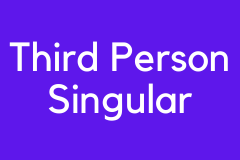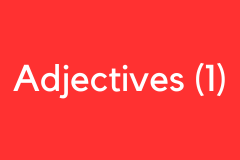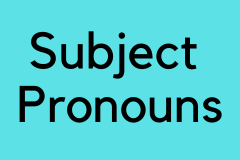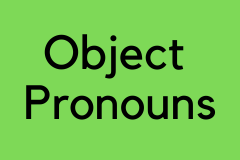Subject Pronouns
Learn how to use subject pronouns correctly with verbs.
Answer the following grammar questions.
Subject Pronouns
Point 1: Subject pronouns take the place of a person or a person's name.
Example: Instead of repeating a name, we can use he, she, it, they, we, you, or I.
Example: Instead of repeating a name, we can use he, she, it, they, we, you, or I.
- Sally is a farmer. She works outside.
- Bob is a doctor. He works at a hospital.
- Bob and Sally are married. They have one child.
- They have a house. It is really big.
- We like them. You will too!
Point 2: The first person subject pronouns are I and we.
These refer to the speaker. I is singular (S) and we is plural (P).
These refer to the speaker. I is singular (S) and we is plural (P).
- (S) I have a pool.
- (S) I swim every day.
- (P) We love Italian food.
- (P) We eat it often.
Point 3: The second person subject pronoun is you.
It refers to the listener and can be singular (S) or plural (P).
It refers to the listener and can be singular (S) or plural (P).
- (S) You are nice.
- (S) You should come.
- (P) You (all) can sit down.
- (P) You (guys) should come.
Point 4: The third person subject pronouns are he, she, it, they.
They refer to people, things, or groups.
They refer to people, things, or groups.
- I like Bob. He is nice.
- I also like Sue. She is funny.
- Bob and Sue are married. They have one child.
- They have a house. It is really big and nice.
- They have two cars. They rarely drive them.
About the Teacher
 My name is Todd Beuckens and I am an ESL teacher in Japan.
My name is Todd Beuckens and I am an ESL teacher in Japan.
I created this site to provide teachers and students free audio lessons and learning materials not usually found in commercial textbooks.










